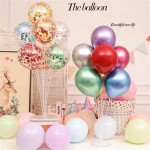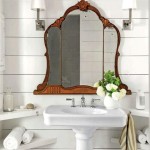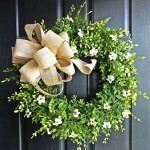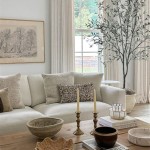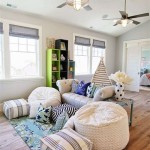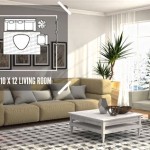How To Decorate An Old Victorian House
Decorating an old Victorian house presents a unique challenge. These homes, built during the reign of Queen Victoria (1837-1901), are characterized by ornate details, intricate moldings, high ceilings, and a sense of grandeur. A successful decorating scheme must respect the architectural heritage of the property while also meeting the needs and aesthetic preferences of the modern homeowner. This article offers guidance on how to approach the decoration of a Victorian house, focusing on maintaining its historic character while incorporating contemporary elements.
Understanding and Preserving Original Features
The cornerstone of any successful Victorian house decoration project is a thorough understanding and preservation of original features. Before embarking on any changes, it is crucial to identify and assess the existing architectural details. This includes identifying original moldings, fireplaces, flooring, windows, and doors. Many of these features may be hidden beneath layers of paint or later modifications. Careful removal of these layers can reveal valuable details that contribute significantly to the home’s character.
Preservation is paramount. Rather than replacing original features, prioritize restoration. Damaged moldings can be replicated by skilled craftsmen, and original wood floors can be refinished to their former glory. Original fireplaces, even if no longer functional, should be retained as focal points. Replacing original features with modern substitutes diminishes the historical integrity and value of the house. When restoration is not possible, replacements should be carefully selected to match the original in material, design, and craftsmanship.
Consider commissioning a historical survey of the property. Local historical societies or architectural historians can provide valuable information about the house's original design, materials, and past occupants. This research can inform decorating choices and ensure authenticity. Understanding the historical context of the house will guide decisions regarding color palettes, furniture styles, and decorative accessories.
Selecting Appropriate Color Palettes and Wall Treatments
Victorian color palettes were rich and diverse, often featuring deep jewel tones, muted shades, and contrasting accents. Popular colors included burgundy, dark green, deep blue, gold, and various shades of brown. Avoid overly bright or modern color schemes that clash with the historical context. Researching authentic Victorian color charts is crucial when planning the interior design.
Wallpapers were integral to Victorian interior design. Intricate patterns, floral motifs, and damasks were common choices. Reproduction wallpapers based on original designs are readily available and can add significant historical accuracy. Alternatively, consider using paint techniques such as stenciling or faux finishes to create a period-appropriate look. When selecting wallpaper or paint, consider the size and lighting of the room. Smaller rooms benefit from lighter colors and smaller patterns, while larger rooms can accommodate bolder choices.
Consider wall treatments such as wainscoting and picture rails. These architectural details were common in Victorian homes and provide visual interest and a sense of formality. Wainscoting can be painted in a contrasting color to create a dramatic effect, while picture rails allow for the easy display of artwork without damaging the walls. These elements enhance the architectural character of the space while providing opportunities for customization.
Avoid stark white walls, as they were not typically used in Victorian interiors. Opt for off-white shades with warm undertones to create a more inviting and historically accurate atmosphere. Consider using different shades of the same color to create depth and dimension within a room. For example, a darker shade can be used on the lower portion of the wall, while a lighter shade is used above the picture rail.
Furnishing and Accessorizing with Period-Appropriate Pieces
Furniture styles during the Victorian era were diverse, ranging from ornate Rococo Revival pieces to more functional and simpler Arts and Crafts designs. Selecting furniture that reflects the architectural style of the house is essential for a cohesive and authentic look. Antique furniture can be sourced from antique shops, auctions, and online marketplaces. Alternatively, reproduction furniture offers a more affordable and readily available option.
Upholstery fabrics should be carefully chosen to complement the color palette and overall aesthetic. Velvet, brocade, damask, and floral prints were popular choices. Consider using a mix of textures and patterns to create visual interest. Avoid modern fabrics such as microfiber or synthetic materials, as they detract from the historical character of the room. Instead, opt for natural fibers such as linen, cotton, and silk.
Accessories play a crucial role in completing the Victorian interior. Antique mirrors, ornate picture frames, vintage lamps, and decorative porcelain add character and charm. Displaying collections of antique objects, such as teacups, clocks, or silverware, can create focal points and reflect the homeowner's personal style. Period-appropriate lighting fixtures, such as gas-style chandeliers and sconces, enhance the historical ambiance of the space. Ensure that lighting fixtures are appropriately sized for the room and provide adequate illumination.
Window treatments should also be carefully considered. Heavy drapes, lace curtains, and valances were common in Victorian homes. Layered window treatments can provide privacy, insulation, and visual interest. Choose fabrics and patterns that complement the color palette and overall aesthetic of the room. Avoid minimalist window treatments that are not consistent with the historical style. Consider adding decorative tiebacks or tassels to enhance the elegance of the drapes.
Pay attention to details such as doorknobs, light switches, and outlet covers. Replacing modern hardware with period-appropriate reproductions can significantly enhance the historical accuracy of the house. Consider using brass or porcelain hardware for a more authentic look. These small details can make a big difference in creating a cohesive and historically accurate interior.
Rugs are essential for adding warmth and comfort to Victorian interiors. Oriental rugs, Persian rugs, and Axminster carpets were popular choices. Choose rugs with rich colors and intricate patterns that complement the furniture and wall treatments. Consider layering rugs to create visual interest and define different areas within a room. Avoid overly modern or minimalist rugs that do not fit the historical style.
Balancing Historical Accuracy with Modern Comfort
While preserving the historical integrity of a Victorian house is important, it is also essential to create a comfortable and functional living space for the modern homeowner. Balancing historical accuracy with modern comfort requires careful planning and compromise. Consider incorporating modern amenities, such as updated kitchens and bathrooms, while maintaining the overall historical aesthetic.
Modern appliances can be integrated into the kitchen while concealing them behind custom cabinetry that matches the original style of the house. Consider using period-appropriate hardware and finishes to maintain the historical character of the space. In bathrooms, modern fixtures such as showers and toilets can be installed while incorporating Victorian-inspired design elements, such as clawfoot tubs and pedestal sinks.
Ensure adequate lighting throughout the house by incorporating both ambient and task lighting. While period-appropriate lighting fixtures are essential, consider adding recessed lighting or track lighting to provide additional illumination. Dimmers can be used to control the intensity of the lighting and create a more inviting atmosphere.
Heating and cooling systems should be updated to provide modern comfort while minimizing their visual impact. Consider using high-efficiency furnaces and air conditioners that can be concealed in closets or attics. Ductwork can be hidden behind walls or ceilings to maintain the historical integrity of the house. Zoning systems can be used to control the temperature in different areas of the house, providing customized comfort.
Technology can be integrated into the house while minimizing its visual impact. Wiring and cables can be concealed behind walls or in conduits. Flat-screen televisions can be mounted on walls or concealed behind custom cabinetry. Wireless technology can be used to reduce the need for visible cables and wires. The goal is to create a modern living space that seamlessly blends with the historical character of the house.
Ultimately, decorating an old Victorian house is a journey that requires careful research, thoughtful planning, and a deep appreciation for historical architecture. By understanding and preserving original features, selecting appropriate color palettes and wall treatments, furnishing with period-appropriate pieces, and balancing historical accuracy with modern comfort, homeowners can create a beautiful and functional living space that honors the rich heritage of their home.
:max_bytes(150000):strip_icc()/alaina-kaczmarski-home-living-1-9b10209fb438487789b81418ed595c2c.jpg?strip=all)
How To Do Victorian Interior Decor The Sophisticated Way

5 Modern Decorating Ideas From A Renovated Victorian House Goodhomes

Modern Victorian Decorating Ideas Cb2 Idea Central

Old World Gothic And Victorian Interior Design Interiors Home Decor
:max_bytes(150000):strip_icc()/ScreenShot2021-08-18at3.46.48PM-0881e8625a754c1a94a611f3e74a6226.png?strip=all)
27 Modern Victorian Decorating Ideas That Aren T Stuffy

Restoring And Decorating A Victorian B Amp Homes Antiques

Victorian Interior Design Style History And How To Create A Modern Decorator New Jersey

Historic Home Tour An 1880 Victorian Mansion Beautiful Bright Between Naps On The Porch

Feast For The Senses 25 Vivacious Victorian Living Rooms Decoist

Decorating How To Use Victorian Colours In A Modern Home Houzz Ie
Related Posts

